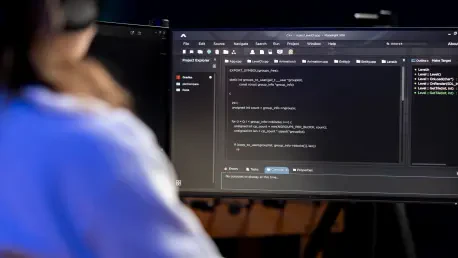Diving into the world of Java development and cutting-edge compiler technologies, we’re thrilled to sit down with Anand Naidu, our resident development expert. With a wealth of experience in both frontend and backend development, Anand brings unparalleled insights into various coding languages and tools like GraalVM. Today, we’re exploring the latest release, GraalVM 25, and its alignment with JDK 25, diving deep into Native Image enhancements, experimental features, and updates for JavaScript and WebAssembly developers. Join us as we unpack the innovations shaping the future of Java compilation and runtime optimizations.
How does GraalVM 25 stand out with its latest release, especially in connection with JDK 25?
GraalVM 25 is a significant update that builds directly on the foundation of JDK 25, which was released around the same time. This alignment ensures that developers get the latest Java features and improvements right out of the gate. Some standout additions from JDK 25 in GraalVM 25 include module import declarations, compact object headers, and a preview of structured concurrency. These enhancements not only boost performance but also improve how developers can structure and manage their code. The timing of the release is crucial because it minimizes the gap between JDK updates and GraalVM’s adoption of those updates, allowing developers to leverage cutting-edge Java capabilities in native binaries without delay.
What are the major improvements in Native Image with GraalVM 25, and how do they impact developers?
Native Image in GraalVM 25 has seen some exciting advancements. One key feature is the default enabling of Whole-Program Sparse Conditional Constant Propagation, or WP-SCCP. This technique sharpens the precision of static analysis during compilation, which can lead to smaller and more efficient native binaries. Additionally, the improved points-to analysis helps reduce the size of these binaries by better understanding data flow and eliminating unnecessary code paths. These optimizations mean faster startup times and lower memory footprints, which are critical for cloud and microservices environments.
Can you explain the role of the XGBoost-based static profiler in Native Image and its benefits?
The XGBoost-based static profiler is a fascinating addition to Native Image in GraalVM 25. It uses machine learning to classify methods as either ‘hot’—frequently used—or ‘cold’—rarely executed—based on inferred call counts. By guiding optimizations to focus on the hot methods, it helps trim down binary size without sacrificing runtime performance. For developers, this translates to leaner applications that still run efficiently, striking a balance between size and speed that’s often hard to achieve manually.
There’s an experimental feature called Advanced Obfuscation in Native Image. What can you tell us about its purpose and limitations?
Advanced Obfuscation is an intriguing experimental feature exclusive to Oracle GraalVM. It’s designed to protect native binaries from reverse engineering by renaming symbols in the compiled image, making it much harder for someone to deconstruct or tamper with the code. Since it’s experimental, it’s still being refined, and its limitation to Oracle GraalVM means not all users can access it in the community edition. It’s a promising step toward enhancing security for applications deployed as native binaries, especially in sensitive environments.
What’s the significance of the experimental H:+RelativeCodePointers option, and how might it benefit certain projects?
The H:+RelativeCodePointers option is another experimental feature in GraalVM 25, aimed at reducing relocation entries in position-independent executables and shared libraries. This is particularly useful for developers working on systems where code needs to be loaded at different memory addresses without modification. By minimizing relocations, it can improve load times and runtime efficiency. For projects involving embedded systems or complex shared libraries, this could be a game-changer, though it’s still in the testing phase and requires careful evaluation.
Turning to GraalJS, what updates in GraalVM 25 should JavaScript developers be excited about?
GraalJS, the JavaScript implementation on GraalVM, brings some cool updates in version 25. A notable one is the default support for source-phase imports from WebAssembly modules, enabled when the relevant options are set. This allows developers to seamlessly integrate WebAssembly code into their JavaScript projects right from the source level, enhancing interoperability. Additionally, ECMAScript 25 is enabled by default, ensuring that developers have access to the latest JavaScript language features without extra configuration. These updates make GraalJS a more powerful tool for modern web development.
Can you elaborate on the changes to Context.eval in GraalWasm and what they mean for developers?
In GraalWasm, which is the WebAssembly runtime in GraalVM, there’s a subtle but important change in how Context.eval operates. Unlike before, where it returned a fully instantiated module, it now returns a compiled module object that hasn’t been instantiated yet. This gives developers more control over the instantiation process, allowing for custom configurations or delayed execution as needed. It’s a small shift, but it aligns better with how developers might want to manage WebAssembly modules in complex applications.
Looking ahead, what’s your forecast for the evolution of tools like GraalVM in the Java ecosystem?
I’m really optimistic about the trajectory of GraalVM and similar tools. As we see tighter integration with JDK releases and more focus on native compilation, I think we’re heading toward a future where Java applications can rival the performance of traditionally faster languages like C++ in more scenarios. Innovations in static analysis, machine learning-driven optimizations, and security features like obfuscation will likely become standard. Additionally, with Oracle’s hints at decoupling GraalVM from the Java ecosystem train, we might see even more flexibility in how it evolves, potentially catering to a broader range of use cases beyond just Java. It’s an exciting time to be in this space, and I expect GraalVM to keep pushing boundaries in performance and versatility.









